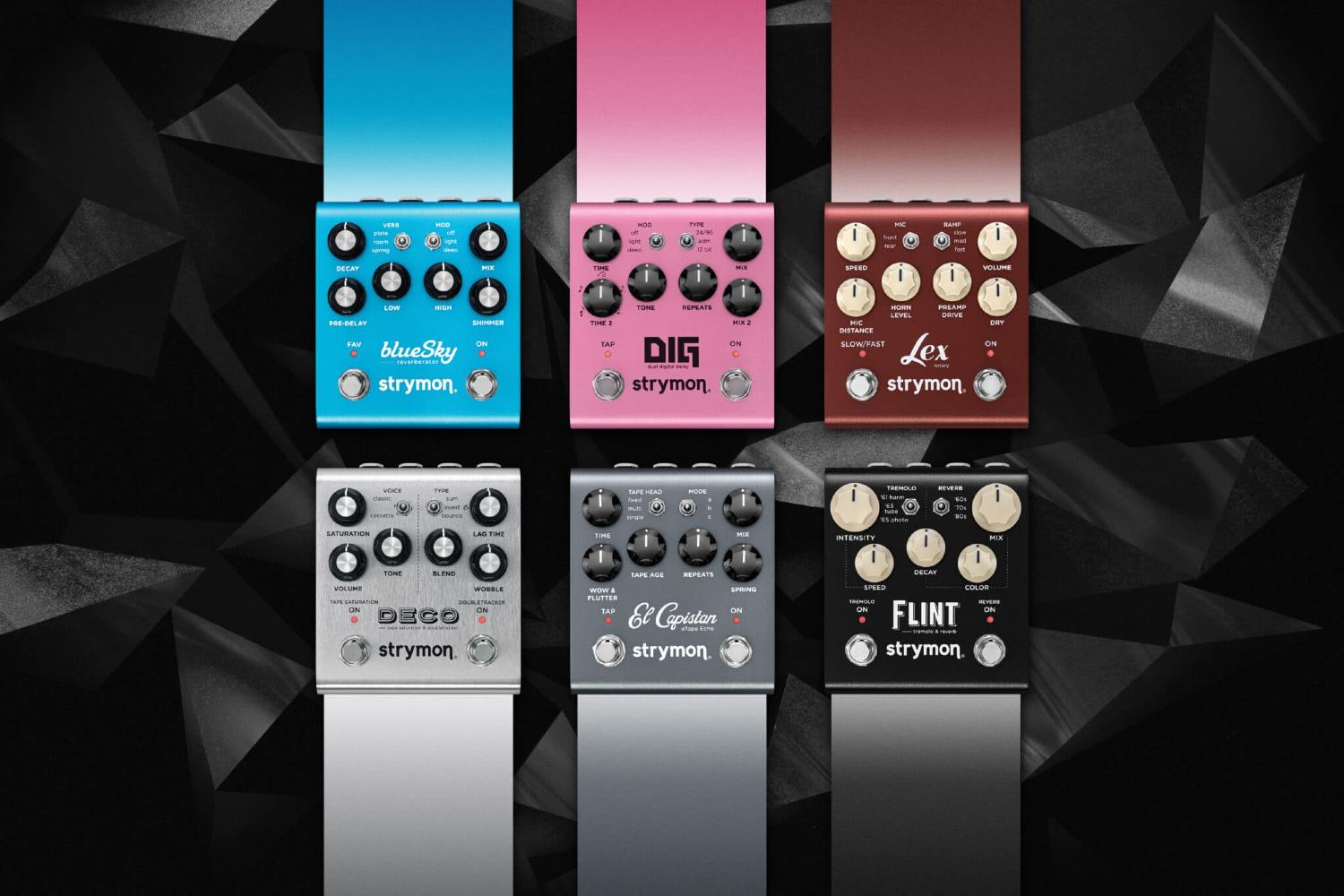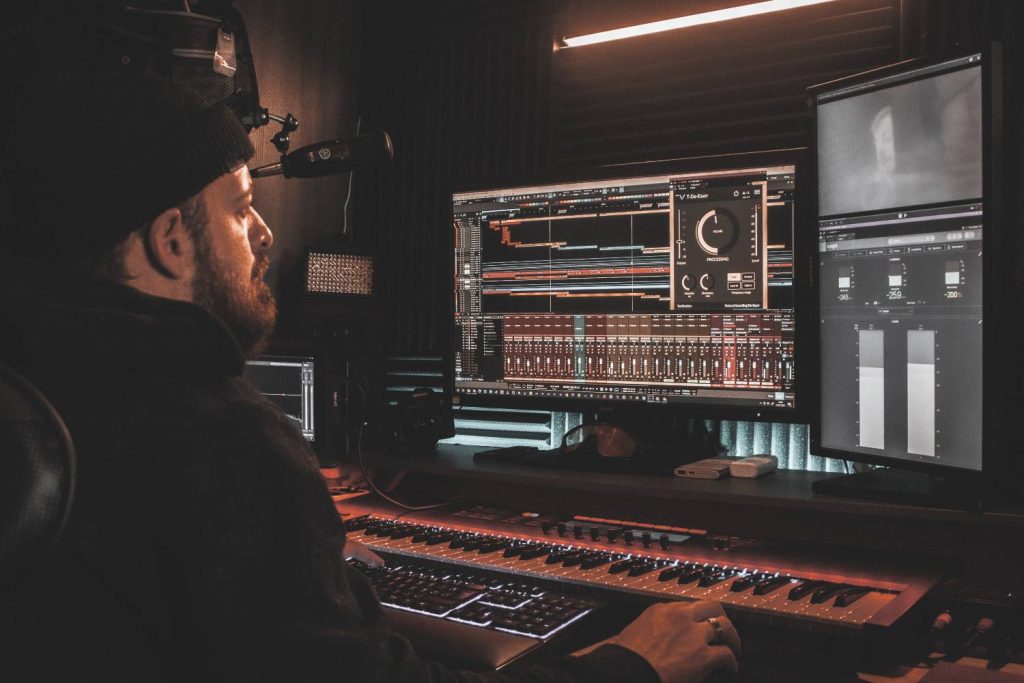Strymon have well and truly earned their reputation in the pedal space, and for good reason.
They’re coveted by players of all skill levels and genres, from lurching shoegazers and experimental sound designers to conservative rock traditionalists, high gain metal enthusiasts and everything in between.
A lot of pedal companies will speak to the promise of better tone, routing and innovative tech. Strymon can back it up in a way that few others can match, with an emphasis on sound quality and creative interactivity between the parameters that has seen them emerge as one of the true tastemakers in the pedal landscape, boasting a handful of bonafide modern classics that have taken pedal design into new and interesting waters.
Read up on all the latest features and columns here.
Founded in 2009 in sunny Southern California by Gregg Stock, Dave Fruehling, and Pete Celi, Strymon was placed in a strong position to succeed.
Stock, the CEO of Strymon and a certified analog circuits whiz whiz, teamed up with Dave Fruehling, bringing with him extensive experience in firmware and system design. Fruehling now leads software infrastructure, MIDI, firmware and UI for Strymon products, while Pete Celi elevates the Strymon brand even further with his extensive DSP (digital signal processing) experience and golden ears for tuning algorithms.
It’s from this core foundation, with their wealth of experience in software and systems and a deep end user focus, that the Strymon brand was born. Their seamless ability to combine tough as nails build quality with limitless sonic possibility are all hallmarks of their work, and of Strymon as a whole.
For local enquiries visit Ambertech.
Nowhere is this more apparent than in arguably the brand’s most famous release, the iconic BigSky Multi Reverb.
First released in 2012, the Strymon BigSky became something of a gold standard for musicians looking for a plethora of rich atmospheric tones in the one box, offering a vast array of reverb algorithms from classic spring and plate reverbs, along with long hall reverbs, ambient soundscapes and more.
The powerful DSP engine is able to emulate the characteristics of multiple acoustic spaces, with an insane amount of mathematical nuance and detail. The pedal’s ability to create a sense of genuine spatial realism and the sheer quality of its audio engine are still borderline unparalleled in the guitar pedal world, and places the BigSky in a tier of audio quality traditionally reserved for the finest of studio-grade rack units.
While the level of acoustic detail and powerful DSP were no doubt a massive drawcard, perhaps the biggest reason for the enduring legacy of the BigSky comes by way of the remarkable interactivity and creativity onboard its tactile user interface. Featuring all the regular parameters like delay, pre-delay, mix and tone, as well as other, more unorthodox features like the awesome Freeze function (which allows the player to hold a chord or sound and play over the top) and the complex interrelationships that exist therein, push the BigSky into some previously uncharted sonic territory. Add to this the ability to receive stereo inputs, as well as MIDI and onboard memory for saving and loading presets and the BigSky really is the limit when it comes to the levels of creativity and customisation at the feet of the guitarist.
Another Strymon release more than worthy of mention is the Strymon Iridium – a revolutionary amp and cabinet simulator, offering a brilliant array of authentic amp tones and IR-based speaker simulations.
Released in 2019, the Iridium gained popularity for its ability to capture the essence of authentic classic amplifiers, thanks to the SHARC DSP engine, which emulates the characteristics of three staples of the amp world: the Fender Deluxe Reverb, the Vox AC30 and the Marshall Plexi.
With parameters such as gain, level, bass, middle, treble, and presence, the Strymon Iridium offers control over the tone to the same degree as that of the original amp. Beyond the amp, the Iridium also allows the user to toggle between impulse responses to switch between ‘Cabs’ A, B & C.
You can’t discuss the legacy of the Strymon pedals without talking about the Timeline Multi Delay. Featuring twelve delay types and over two hundred presets, the Timeline has gained recognition for its ability to recreate an array of delay sounds – from classic tape echoes to analogue delays, to modern digital and ambient textures. With extensive control over delay parameters, such as time, feedback, mix, filter, modulation and decay, the Strymon Timeline can fill a multitude of roles thanks to its MIDI compatibility and expression pedal control, all in stereo. I’d be remiss to state that the Timeline had one standout feature; as there are many. The Strymon Timeline has the Dual Delay feature, which allows the artist to have two different delays running simultaneously, dramatically enhancing the creative possibilities of the pedal. The routing itself allows you to integrate the Timeline into your system as you see fit: there’s stereo in and output jacks, MIDI in and out, and a toggle switch that shifts the stereo input and output to a feedback loop, accessible via the Right In and Out.
The final two pedals that need a mention are the Strymon El Capistan V2 and the Strymon Volante. The El Capistan V2 is a Tape Echo-style pedal offering three distinctive machine types: Fixed, Multi and Single. These machine types greatly determine the tone of the tape echo, with their own sonic characteristics, and with comprehensive controls including delay time, tape age, bias and crinkle, wow & flutter, tape head spacing, and mix – the ability to dial in almost anything from subtle slap-back to expansive elaborate tape delay textures is intuitive and easy. Another unique feature onboard the Strymon El Capistan is the ‘Sound on Sound’ feature, which allows users to layer loops of sound on top of their delay tails. Thus, the El Capistan can function almost as a loop pedal, facilitating easy overdubbing.
Filling a similar hole in a lot of senses is the Strymon Volante, a magnetic echo machine that captures the classic characteristics of a magnetic drum echo, as well as studio tape echoes, and a looper.
When it comes to music and audio equipment, every generation has its handful of brands and products that come to define the workflows and sonic signature of that particular time period. When all is said and done, there is little doubt the enduring sonic influence that Strymon has had on the pedalboards of some of the biggest names in the post millennial guitar space.
Take for example the pedals that we have showcased in this article, and the people who love them. The list includes David Gilmour, John Mayer, The Edge, Tim Pierce, Steve Vai, John Petrucci, Johnny Greenwood, Mark Lettieri and a long list of other incredible musicians too long to mention.
This diverse list speaks to Strymon’s vast array of products that cater to just about every kind of player imaginable— while also having features available for tones we can’t even imagine! Their routing, interface and DSP are second to none, built upon the experience and passion of a growing company. This truly is a testament to the fact that Strymon pedals have the incredible capacity to be tailored to an artist’s desired tone, and furthermore, the tones of the iconic recordings of many of your favourite artists.
For more information, head to Strymon.







